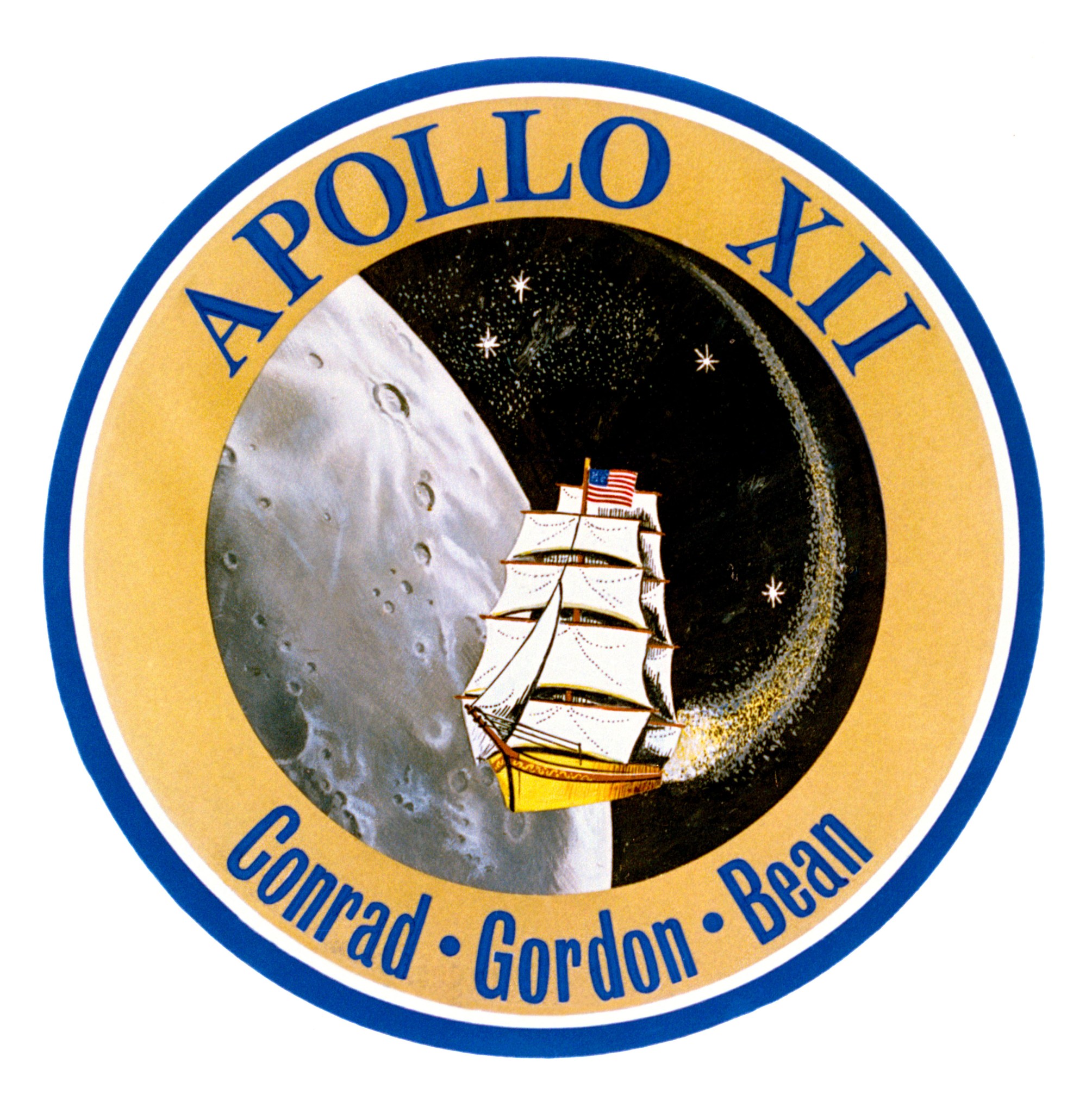
Tragedy struck the NASA community on October 5, 1967. While traveling from the Kennedy Space Center to visit his parents in Mobile, Alabama, Astronaut Clifton C. “C.C.” Williams was killed when his T-38 aircraft crashed near Tallahassee, Florida, following a mechanical failure. Selected for NASA’s Group 3 Astronaut Class in 1963, Williams served as backup Pilot for Gemini 10. At the time of his death he was assigned to a backup crew with Astronauts Charles “Pete” Conrad and Richard Gordon, training as Lunar Module Pilot (LMP) for an Apollo mission to test the LM in Earth orbit. Alan Bean took Williams’ place on that crew. That mission turned out to be Apollo 9, and the backup crew for that flight became the prime crew for Apollo 12, the second Moon landing mission.
In honor of Williams, the Apollo 12 crew included four stars on their mission patch: three for the flight crew of Conrad, Gordon and Bean, and one for Williams. In tribute, his naval aviator wings were placed on the lunar surface.


























